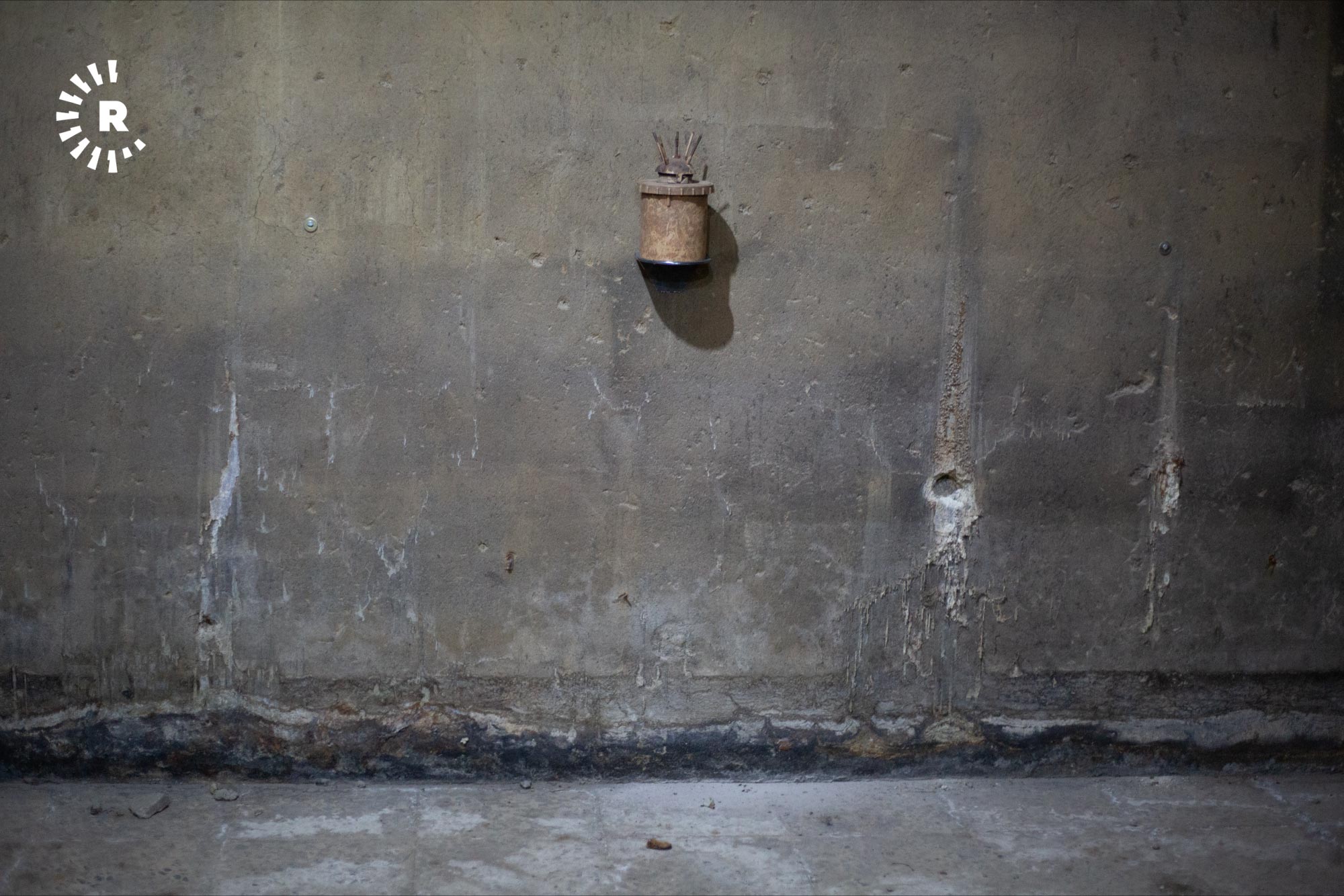10 Photos
Photo Gallery
SULAIMANI, Kurdistan Region — In the darkness of a basement that was once a notorious prison used by the Iraqi regime for torture, the tales of women and womanhood in Kurdish society are now being told by the youth of Sulaimani.
A woman pours chocolate over herself, the image of another woman in solitary confinement breaks into pieces. In the next photo, a woman changes her form every day. Opposite photos of women whose faces were disfigured is a woman in a white dress arranging her hair. The sound of high heels can constantly be heard over the echoes of the murmurs of both young and mature people in the audience in a hot and dimly lit basement of prison cells and cells of solitary confinement.
Zherzemin, which translates to “basement” in English, is a feminist art project that consists of twelve works in photography, video and sound installations. There are video performances in addition to collage and photography by nine female Kurdish artists.
“Zherzemin is basically a zherzamin [basement] project, which is in the basement, in the darkness, because we are trying to put together a movement, or a new perspective. All the ideologies all the things that has happened, first it was in the darkness, or was in a small place and in the place that is thrown away,” Niga Salam, curator for the project told Rudaw English.
The project, which is experimental and a series of other subsequent activities such as debates, writings and discussions from critics and the audience, aims to showcase the thoughts and issues of the new generation of women, issues that are sometimes decades old yet keep happening. In addition, it works on connecting the “totally different” new generation and the old generation of artists that lived a life of war, explains Salam.
Salam has participated in two works of art herself, titled “-ing” and “Me”.
The work of art titled “Me,” an art installation of a cube of hair, was a statement by Salam on the association of hair with women.
“If women mean hair, here is all my hair and here I am, am I not a woman anymore? Or how does that cube define my identity, my sexuality, my cultural place in the community, my political place in the community, or how I’m not accepted or even accepted?” says Salam.
“Historically this place was once full of bodies, people couldn’t come down because of the bad smell of the bodies here,” Salam said, adding that now, groups of women are making an art project there.
Kizhan Khasraw, one of the artists, says for her working on a concept comes from issues one has faced.
“Some people, when they work, have seen pain, this makes you work on the concept,” she said, adding she might not have faced problems the same way they are displayed in her work, but that she has “displaced them [her issues] in other ways” and has expressed them differently.
Amna Suraka, or the Red Security, was once a Saddam-era prison used for torture, the holding of prisoners, and interrogations. It has now been turned into a museum and a place to showcase culture. Etchings and writings on the walls, bullet holes, torture cells, and other items remain preserved as evidence of the Baathist-era atrocities against Kurds.
The project will be displayed until Wednesday. Below are a number of the works of art.
A woman pours chocolate over herself, the image of another woman in solitary confinement breaks into pieces. In the next photo, a woman changes her form every day. Opposite photos of women whose faces were disfigured is a woman in a white dress arranging her hair. The sound of high heels can constantly be heard over the echoes of the murmurs of both young and mature people in the audience in a hot and dimly lit basement of prison cells and cells of solitary confinement.
Zherzemin, which translates to “basement” in English, is a feminist art project that consists of twelve works in photography, video and sound installations. There are video performances in addition to collage and photography by nine female Kurdish artists.
“Zherzemin is basically a zherzamin [basement] project, which is in the basement, in the darkness, because we are trying to put together a movement, or a new perspective. All the ideologies all the things that has happened, first it was in the darkness, or was in a small place and in the place that is thrown away,” Niga Salam, curator for the project told Rudaw English.
The project, which is experimental and a series of other subsequent activities such as debates, writings and discussions from critics and the audience, aims to showcase the thoughts and issues of the new generation of women, issues that are sometimes decades old yet keep happening. In addition, it works on connecting the “totally different” new generation and the old generation of artists that lived a life of war, explains Salam.
Salam has participated in two works of art herself, titled “-ing” and “Me”.
The work of art titled “Me,” an art installation of a cube of hair, was a statement by Salam on the association of hair with women.
“If women mean hair, here is all my hair and here I am, am I not a woman anymore? Or how does that cube define my identity, my sexuality, my cultural place in the community, my political place in the community, or how I’m not accepted or even accepted?” says Salam.
“Historically this place was once full of bodies, people couldn’t come down because of the bad smell of the bodies here,” Salam said, adding that now, groups of women are making an art project there.
Kizhan Khasraw, one of the artists, says for her working on a concept comes from issues one has faced.
“Some people, when they work, have seen pain, this makes you work on the concept,” she said, adding she might not have faced problems the same way they are displayed in her work, but that she has “displaced them [her issues] in other ways” and has expressed them differently.
Amna Suraka, or the Red Security, was once a Saddam-era prison used for torture, the holding of prisoners, and interrogations. It has now been turned into a museum and a place to showcase culture. Etchings and writings on the walls, bullet holes, torture cells, and other items remain preserved as evidence of the Baathist-era atrocities against Kurds.
The project will be displayed until Wednesday. Below are a number of the works of art.
Title: Psyche of Women. Video performance by Chnar Ali. The artist here is trying to say, “We can explain ourselves through our hair.” June 24, 2021. Photo: Khazan Jangiz/Rudaw
Title: Me. Installation by Niga Salam. The artist defies the cultural belief that a woman is defined through her hair. “In the beginning, I thought it’s true that something might change if I shave my hair, but it didn’t.” June 24, 2021. Photo: Khazan Jangiz/Rudaw
Title: De-figuration. Collage by Kizhan Khasraw. Artist displays the acid attacks on women which have taken place for decades. June 24, 2021. Photo: Khazan Jangiz/Rudaw
Title: This is not me. Photo installation by Gasha Kamal. June 24, 2021. Photo: Khazan Jangiz/Rudaw
Title: Distorted Body. Photo installation by Larin Aram. The artist, who had cosmetic surgery operations done on herself, shows “the progressive way of women fitting” beauty standards, “moving from corsets to nose jobs.” It’s a different form of disfigurement from acid attacks but it is connected. June 24, 2021. Photo: Khazan Jangiz/Rudaw
Title: “One is not born, but rather becomes a woman,” a famous quote by Simone de Beauvoir. Installation by Rayan Yousif. June 24, 2021. Photo: Khazan Jangiz/Rudaw
Art project curator Niga Salam. June 24, 2021. Photo: Khazan Jangiz/Rudaw
Title: This is not me. Photo installation by Gasha Kamal. June 24, 2021. Photo: Khazan Jangiz/Rudaw
Zherzemin art exhibition in Sulaimani's Amna Suraka. June 24, 2021. Photo: Khazan Jangiz/Rudaw
Title, V 69. Installation by Lavan Ibrahim. June 24, 2021. Photo: Khazan Jangiz/Rudaw
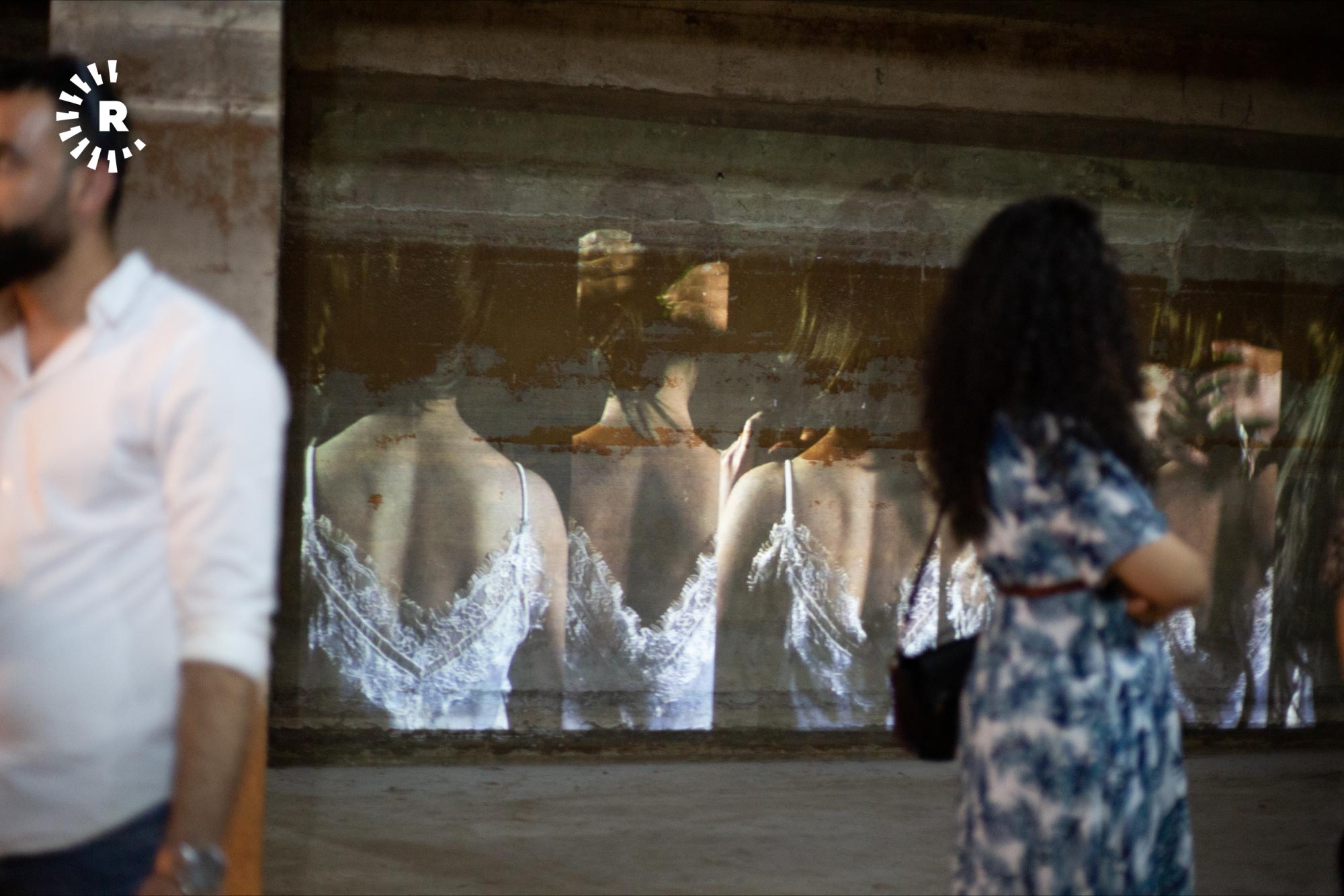
Zherzemin: Womanhood and its place in Kurdish culture and society
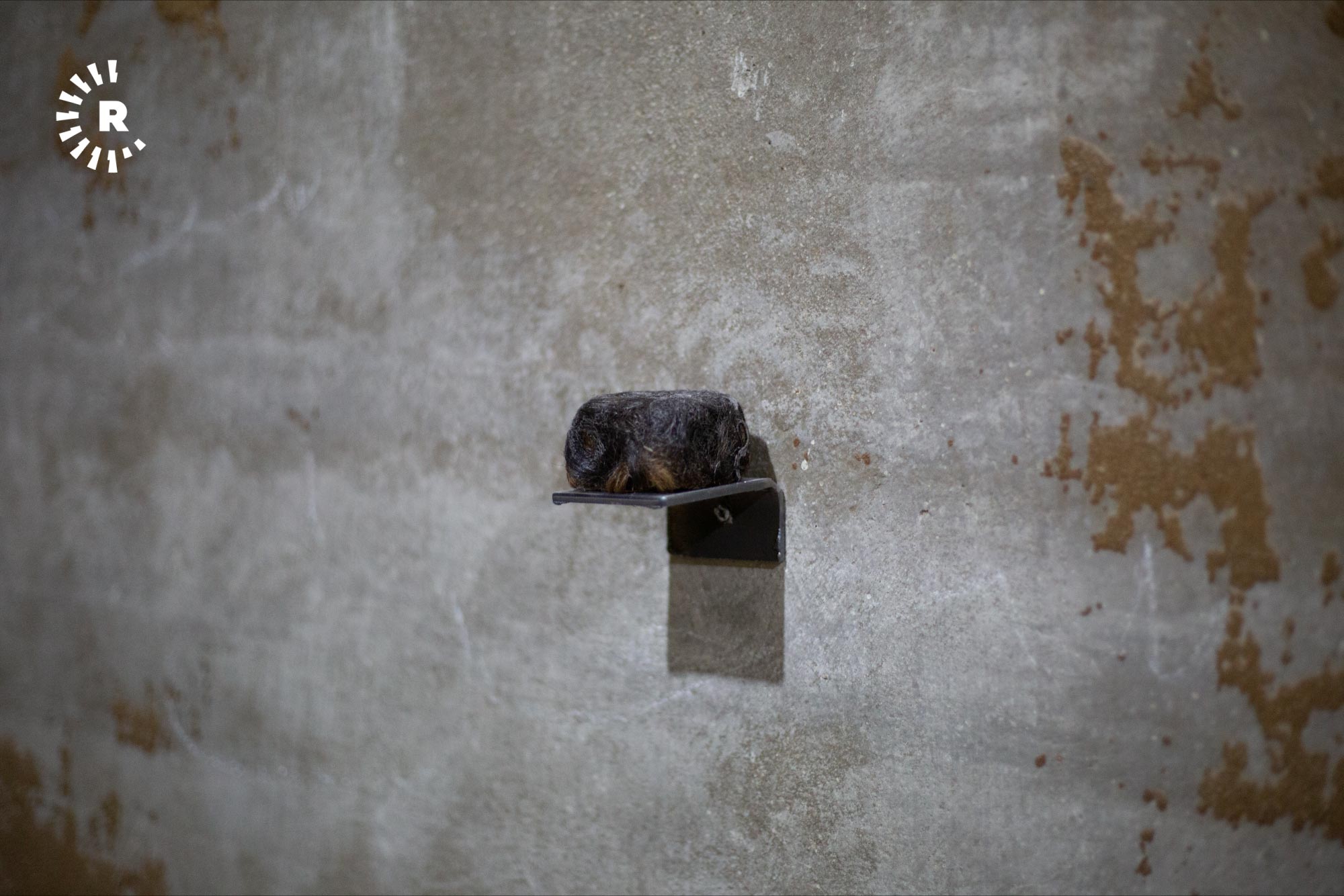
Zherzemin: Womanhood and its place in Kurdish culture and society
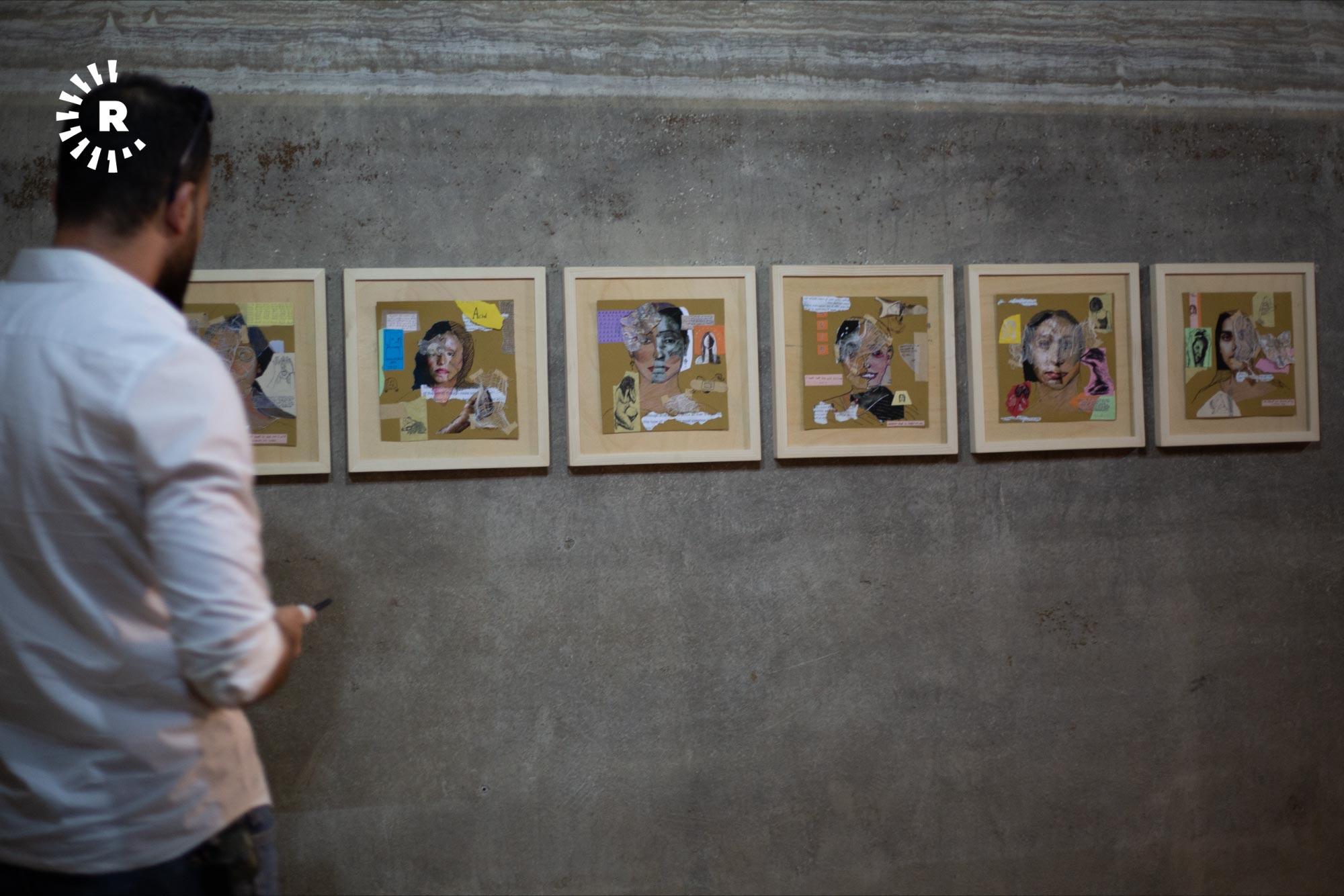
Zherzemin: Womanhood and its place in Kurdish culture and society
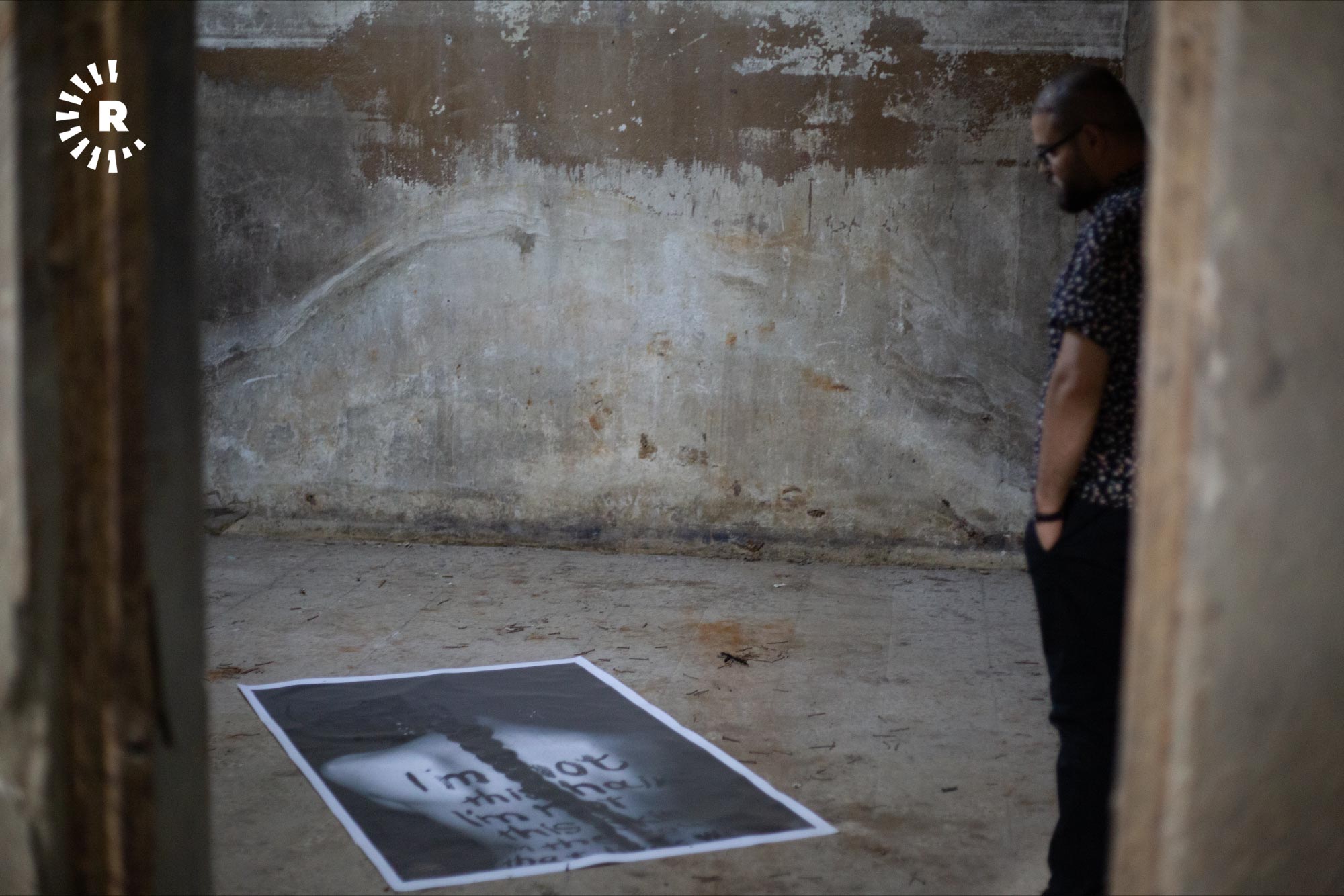
Zherzemin: Womanhood and its place in Kurdish culture and society
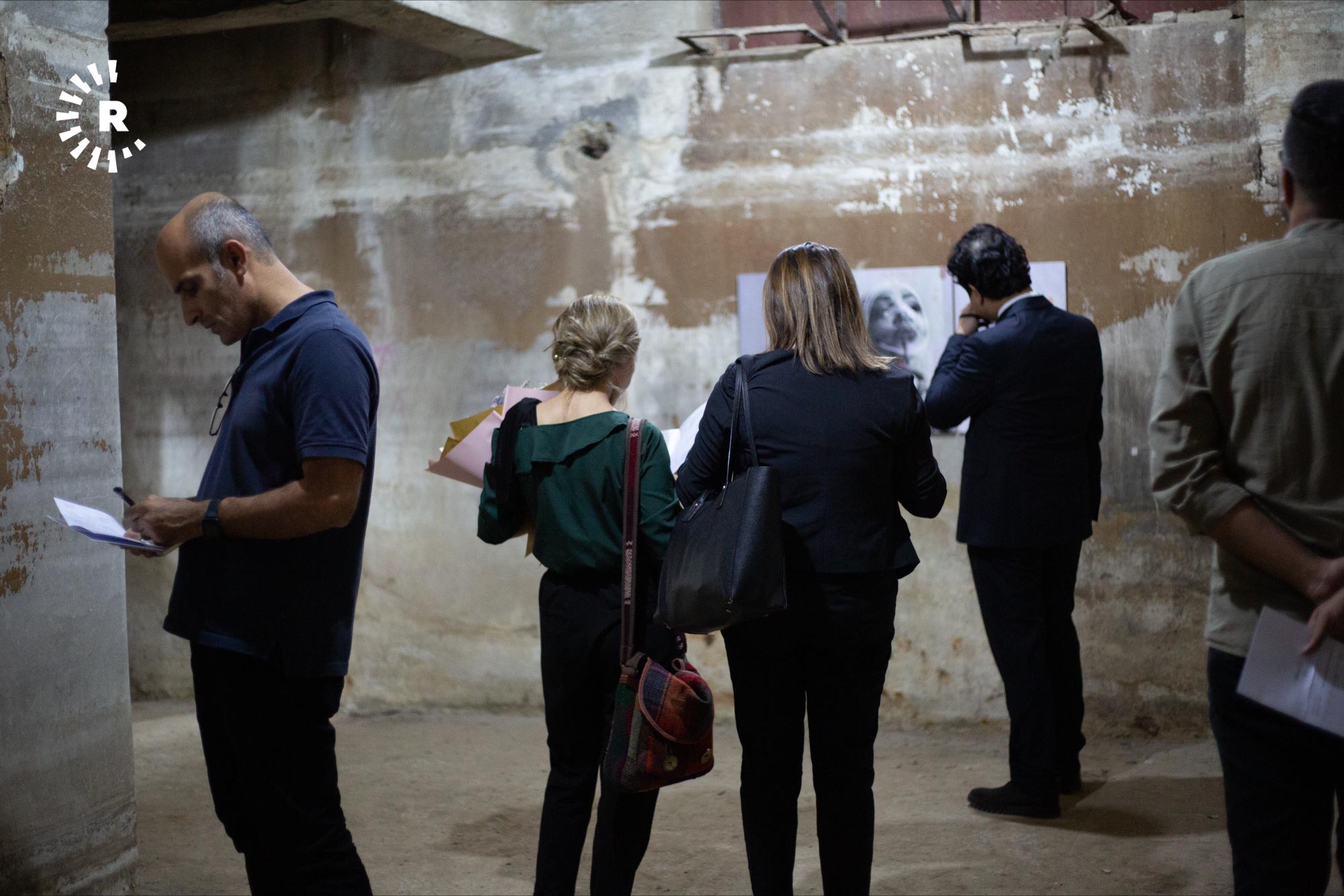
Zherzemin: Womanhood and its place in Kurdish culture and society
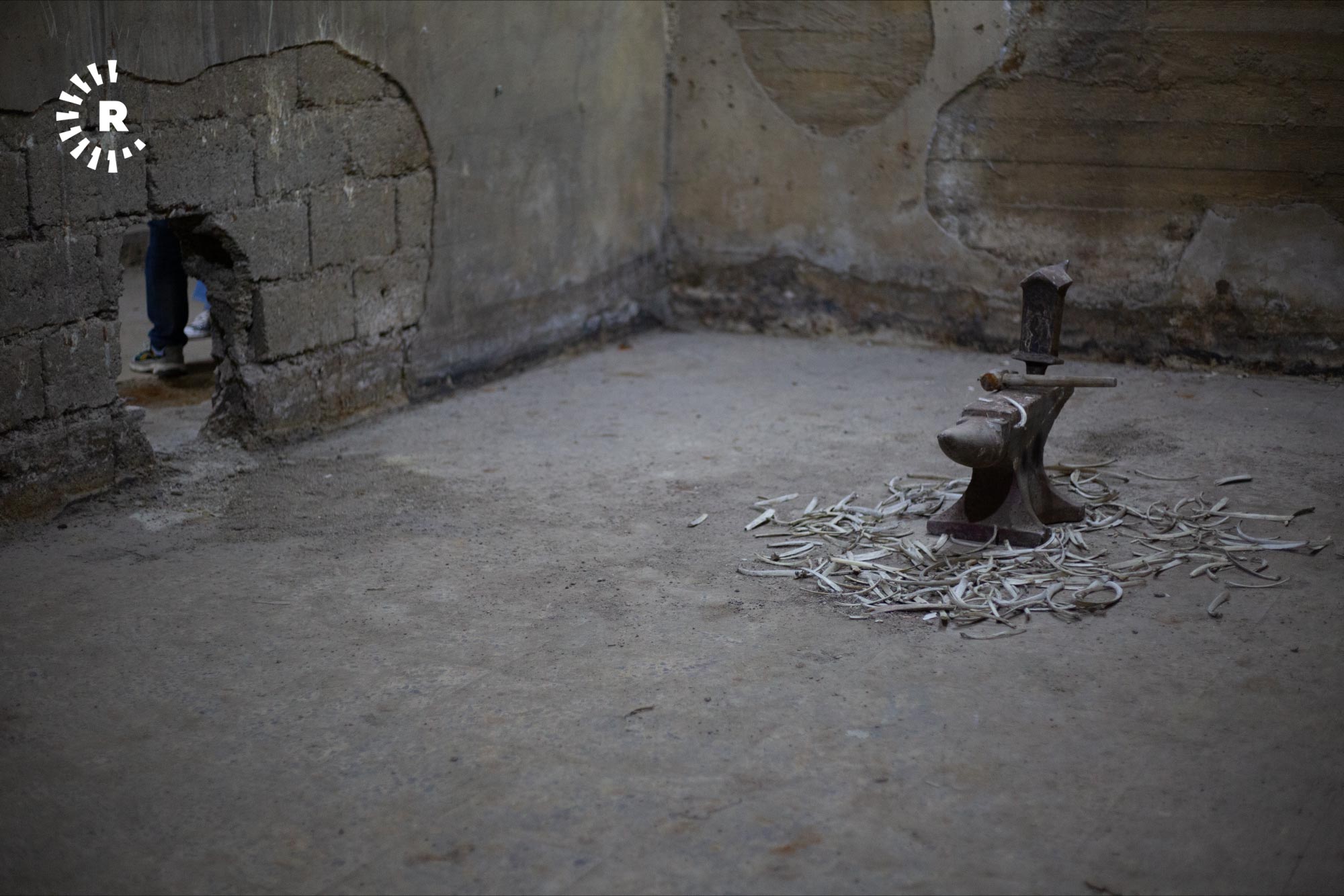
Zherzemin: Womanhood and its place in Kurdish culture and society
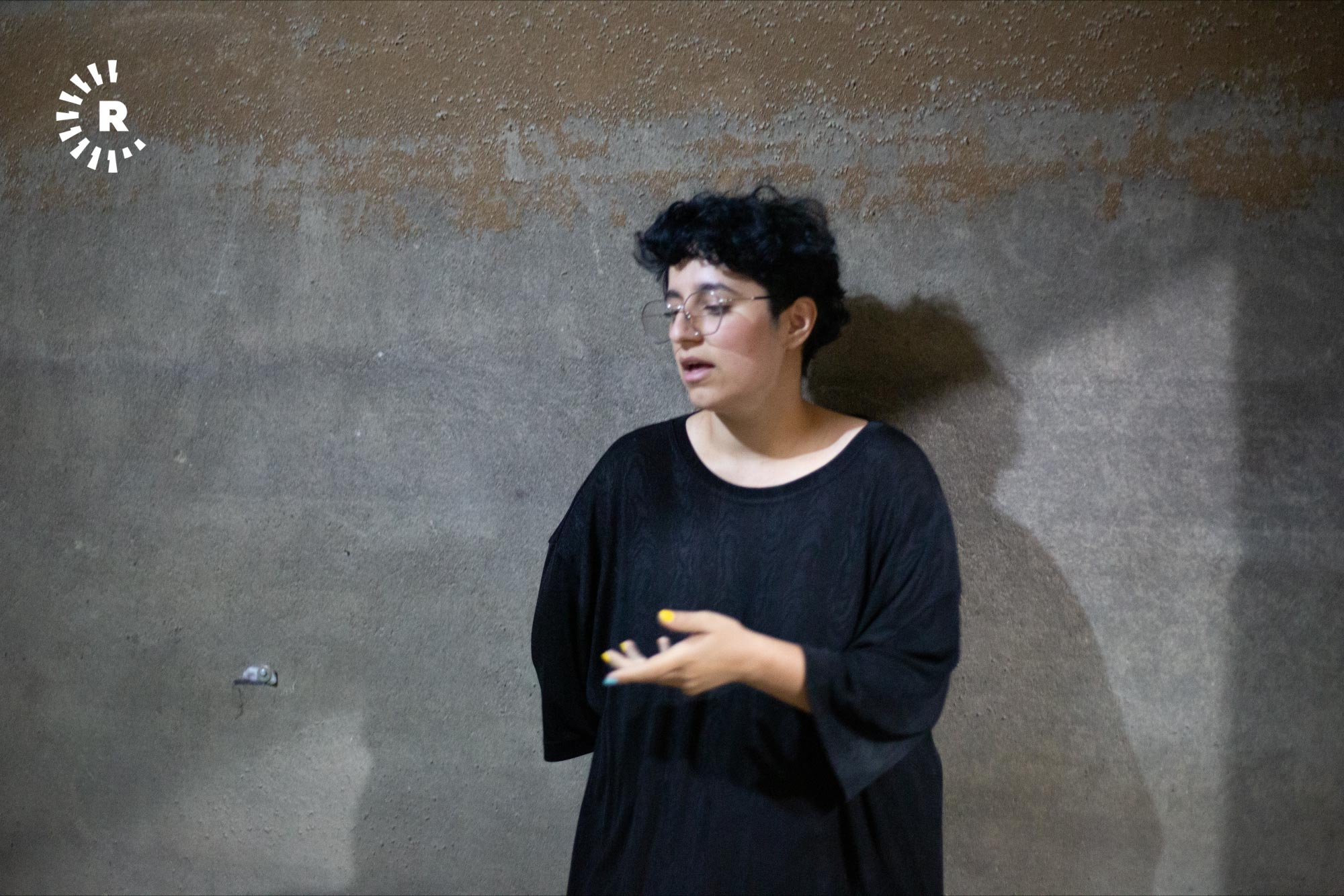
Zherzemin: Womanhood and its place in Kurdish culture and society
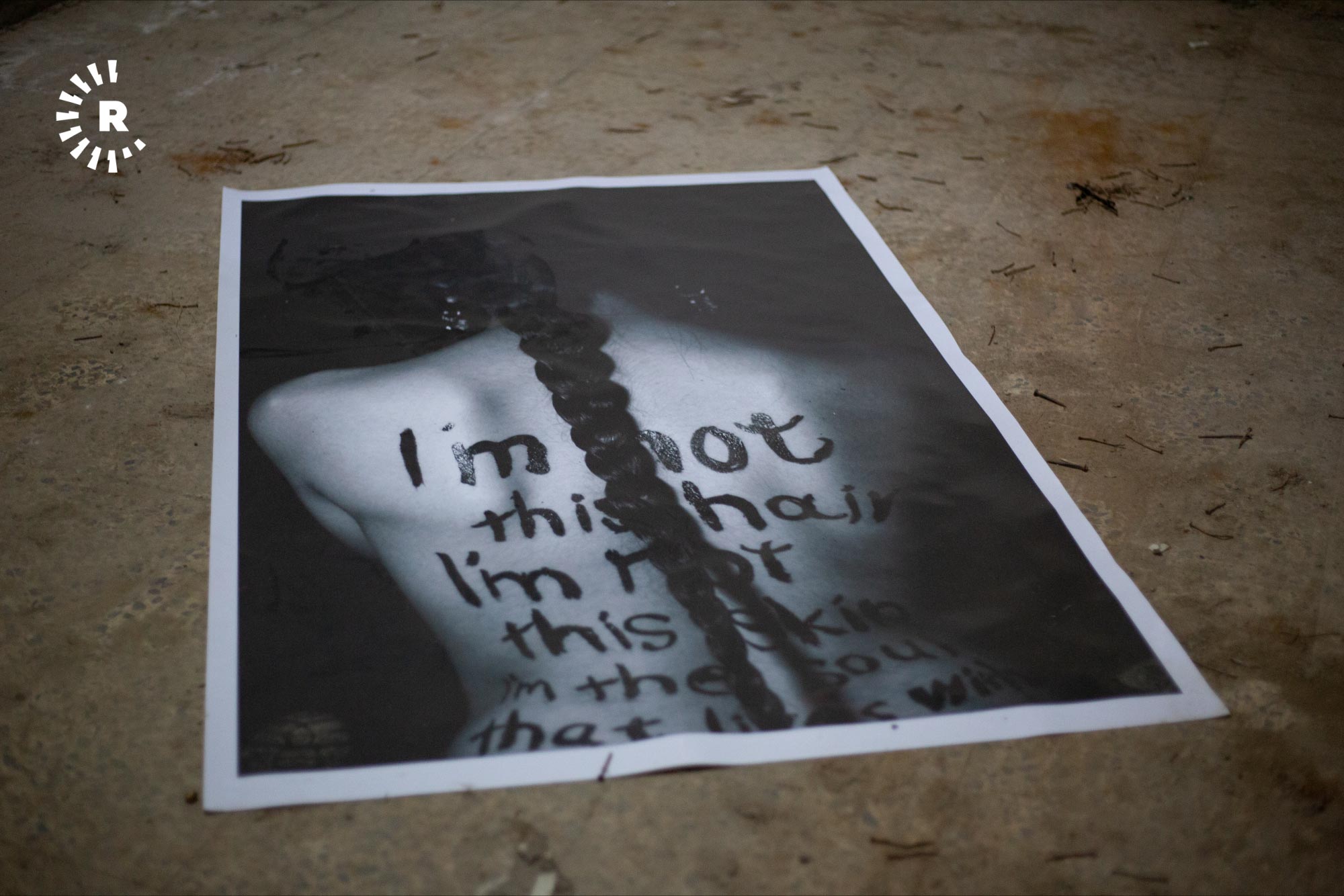
Zherzemin: Womanhood and its place in Kurdish culture and society
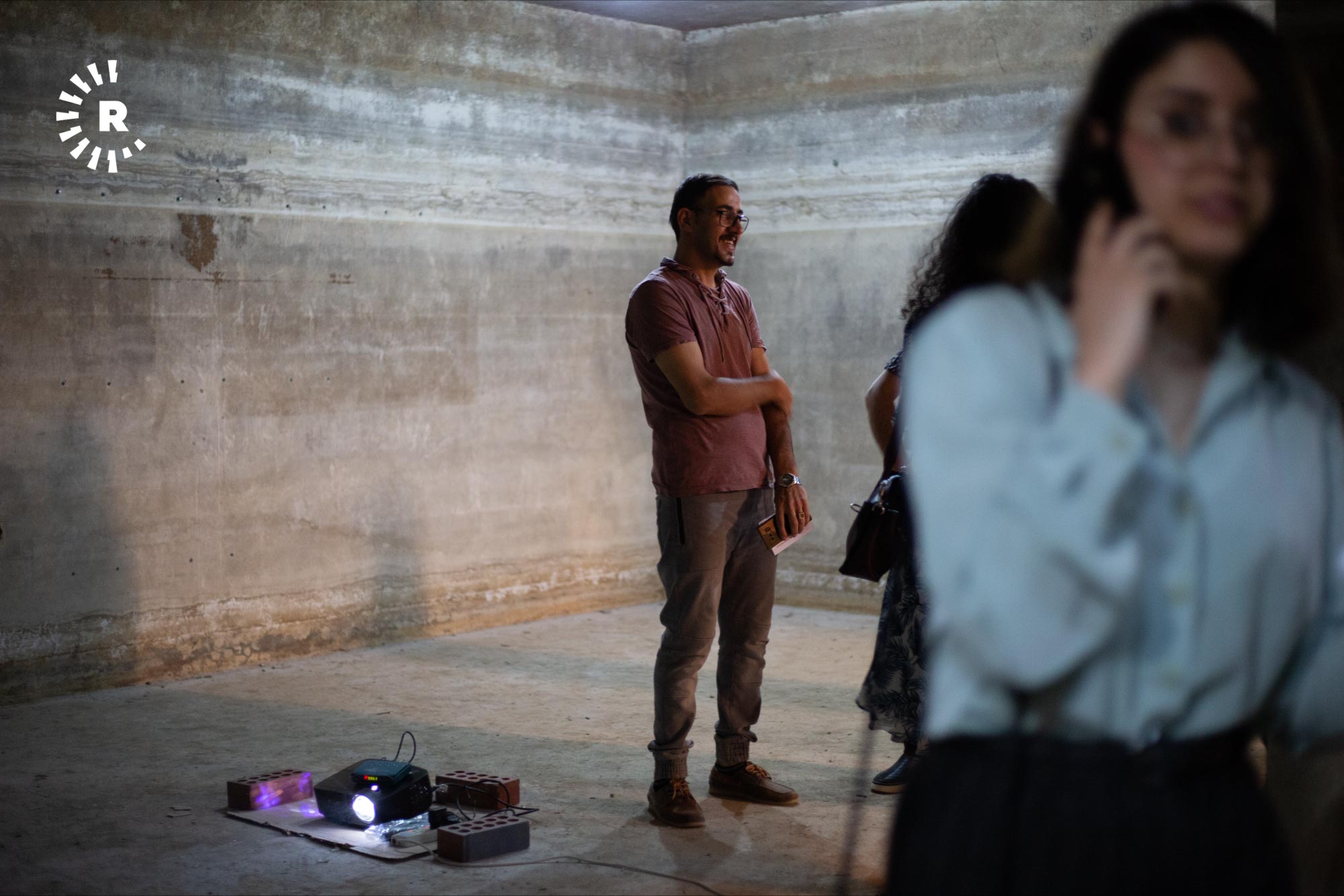
Zherzemin: Womanhood and its place in Kurdish culture and society
